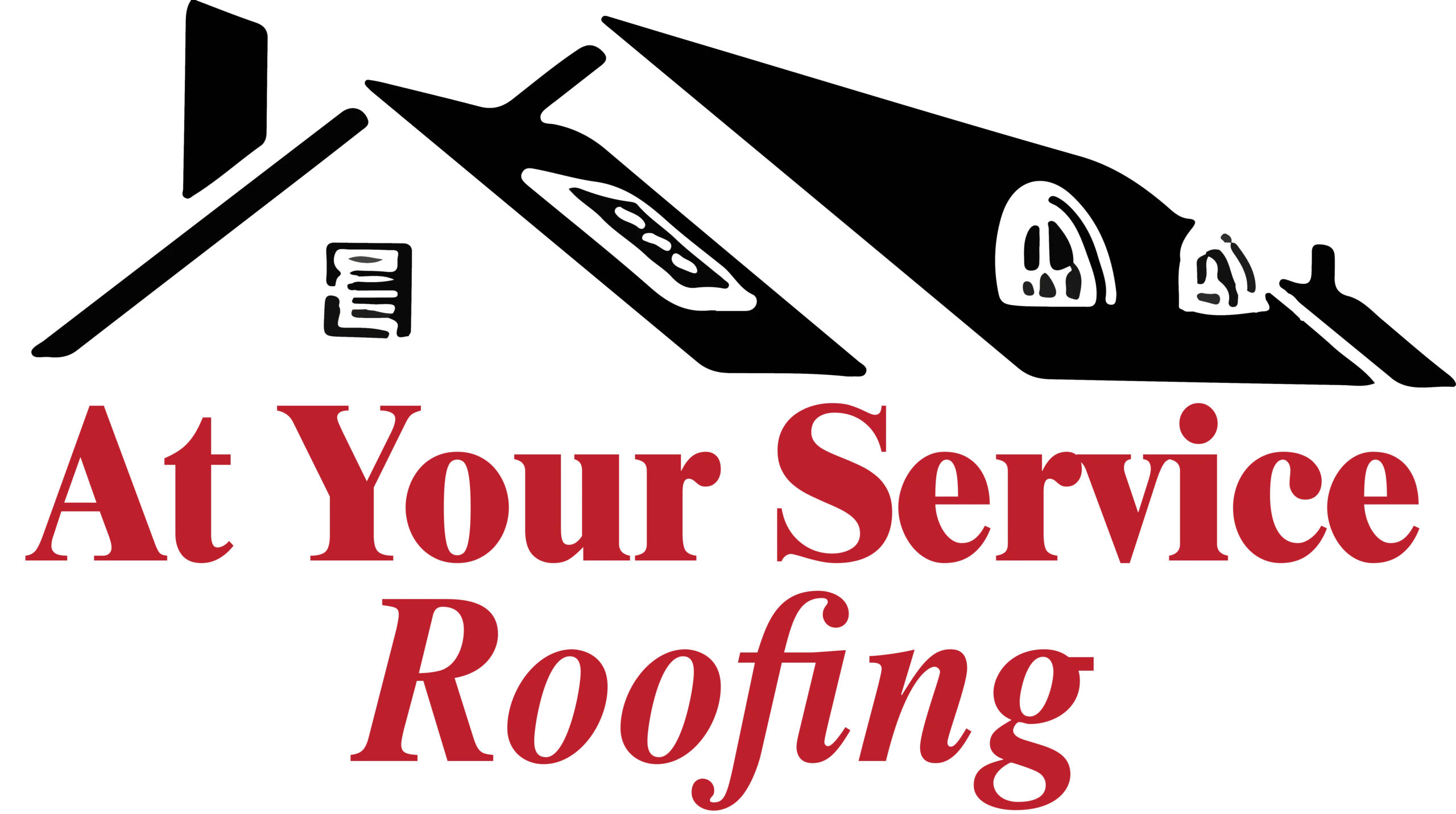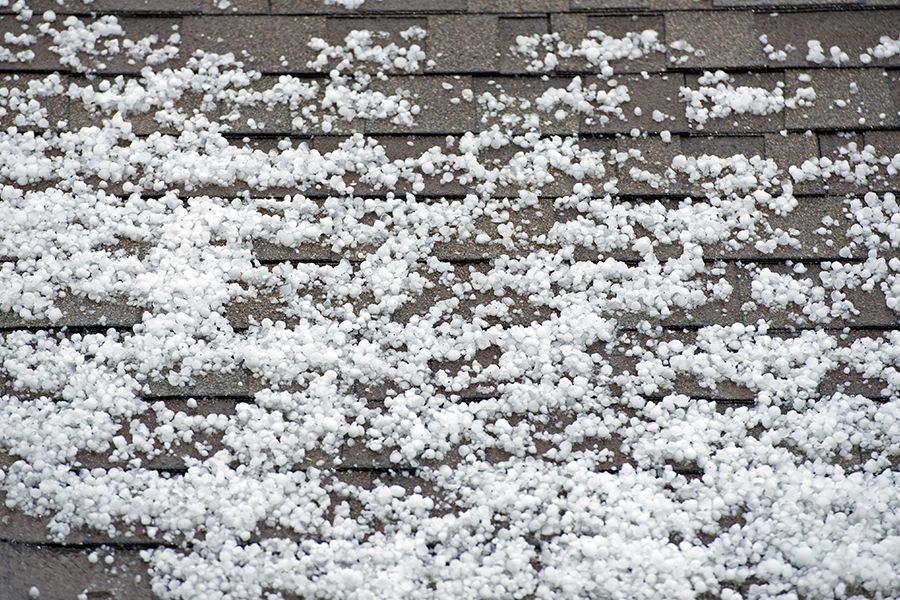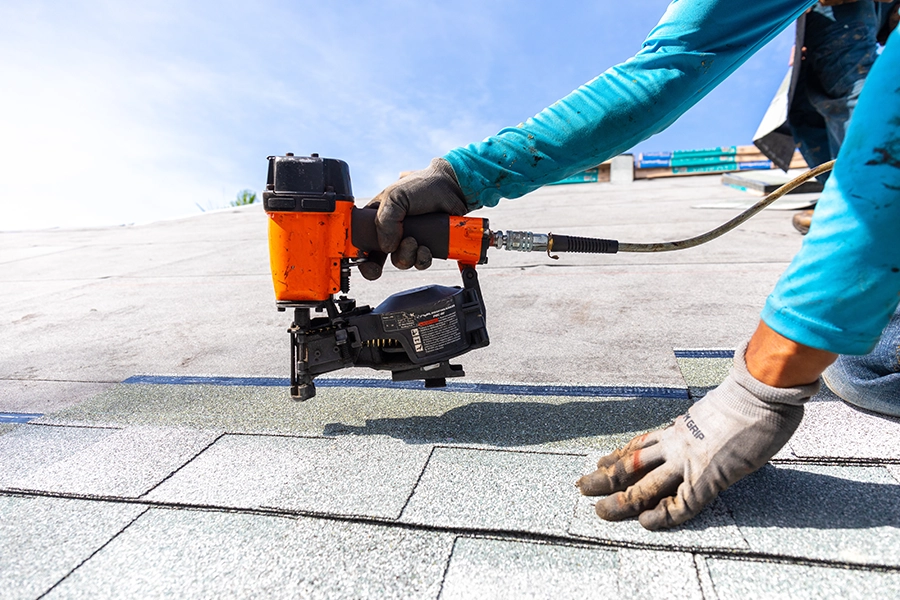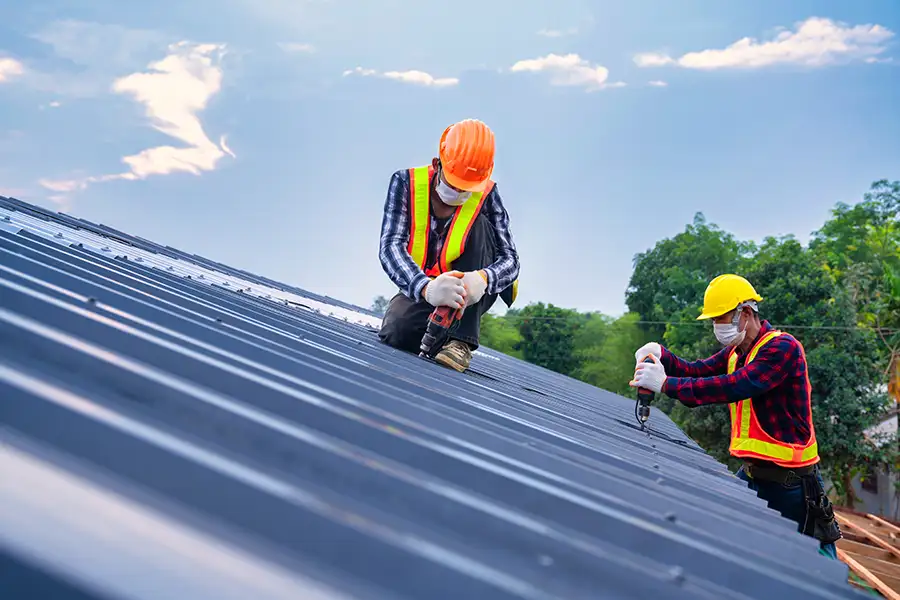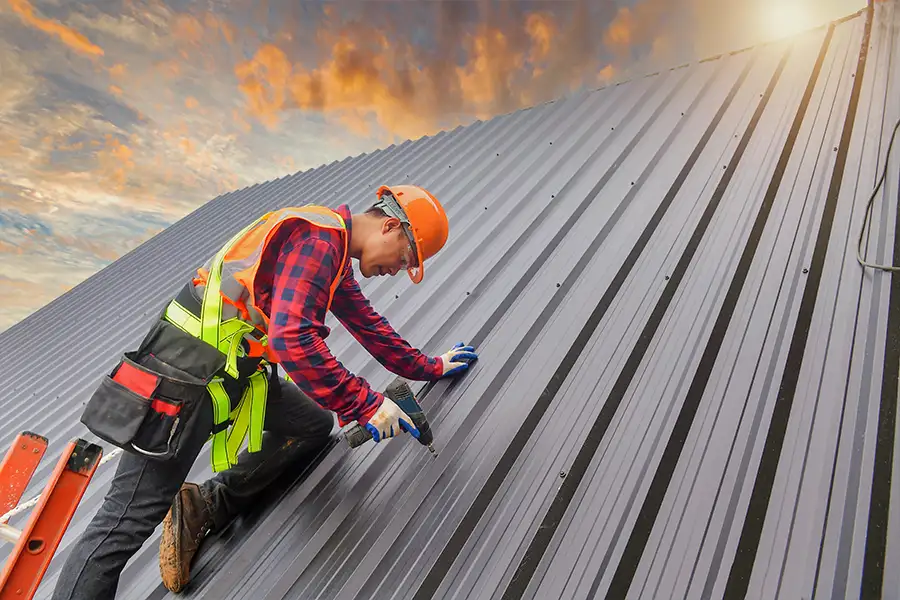Weather phenomena, especially in regions like Central, IL, can vary in intensity, with hailstorms being a particularly problematic event for homeowners. One of the primary concerns is the potential damage that hail can cause to roofs. At Your Service Roofing aims to educate homeowners on this vital topic. The damage a roof sustains from hail depends largely on three key factors: the material of the roof, its designated class, and the size of the hailstone. While hailstorms can be concerning, understanding the nuances of how hail size interacts with roof material and design can guide homeowners in Central, IL, on when to seek professional inspections and repairs. Being proactive and knowledgeable can significantly reduce stress and costs associated with hail-related roof damage.
Roofing Material & Class
At Your Service Roofing emphasizes the importance of not only choosing the right material but also paying attention to its designated class. When it comes to roofing materials best suited for hail-prone areas, some stand out for their resilience. Metal roofs, for instance, are both durable and energy-efficient, capable of withstanding significant impacts without showing much wear. Similarly, rubber roofs, with their natural elasticity, can absorb and rebound from hailstone impacts, reducing the chances of breakage.
However, the material is just one part of the equation. The UL2218 classification system, used to grade roofing materials based on their resistance to impact, plays a crucial role in determining a roof’s durability against hail. Specifically, roofs with a UL2218 Class 3-4 impact rating are the best choices for areas prone to severe hailstorms. These high-class roofs are tested with steel balls simulating hailstones, ensuring they can weather the impacts of real-life storm conditions. In essence, homeowners in Central, IL, need to consider both the material and its class, as it can mean the difference between a roof that barely lasts a season and one that stands strong for years.
Hailstone Size
Hailstorms, with their icy projectiles, can wreak havoc on structures, especially roofs, that bear the direct brunt of their onslaught. At Your Service Roofing believes in empowering homeowners with knowledge. Their potential to cause damage significantly depends on their size. Depending on the class of the roof, hailstones ranging from 1″ in diameter can begin to show damage on certain roofing materials, while sturdier roofs might only exhibit noticeable harm when struck by hailstones more than 2.5″ in diameter. However, size isn’t the sole determinant. The speed and angle at which hailstones fall can also greatly affect the extent of the damage. Faster wind speeds can accelerate hailstones, increasing their force upon impact. Being aware of these dynamics can help homeowners take proactive measures during storms, ensuring their roofs remain as protected as possible against the unpredictable nature of hailstorms.
Signs of Roof Damage
Roofs, acting as the primary shield against the elements, inevitably encounter wear and tear over time. In places like Central, IL, where diverse weather conditions are par for the course, a roof might suffer more than just age-related degradation. At Your Service Roofing firmly believes that educating homeowners on the early signs of roof damage can prevent small issues from escalating into major, cost-intensive repairs. One of the most common and easily noticeable signs of roof damage is missing or damaged shingles. Over time, due to constant exposure, shingles can curl, crack, or even get blown away, leaving the underlying structure vulnerable.
Water stains on your ceiling or walls are another red flag. These discolorations often hint at a leak in the roof, allowing water to seep into the home’s interior. If not addressed promptly, such leaks can lead to more significant structural damage and even mold growth. If you start noticing many particles, which look like coarse sand, in your gutters or downspouts, it could mean that your shingles are nearing the end of their lifespan. Other signs include sagging roof decks, light penetrating through the roof, and a noticeable increase in energy bills, indicating poor insulation due to roof damage. A proactive approach to roof maintenance not only ensures the safety and integrity of the structure but also results in significant long-term savings.
Professional Roof Inspection
While it might be tempting to assess the situation oneself, climbing onto a roof, particularly post-storm, can be hazardous. Moreover, the untrained eye might miss subtle signs of damage, leading to more significant issues down the line. This is where the expertise of a professional roof inspector becomes invaluable. At Your Service Roofing, located in Central, IL, stresses scheduling a roof inspection for potential storm damage restoration with our trained team of professionals. Apart from the evident risks associated with heights, post-storm roofs can be slippery or structurally compromised. A layperson might not only endanger themselves but also inadvertently cause more damage to an already weakened roof. In contrast, professional inspectors are equipped with the necessary safety gear and are trained to navigate these challenges, ensuring both their safety and the integrity of your home.
Furthermore, our team’s expertise extends beyond mere visual assessments. We understand the nuances of various roofing materials, the patterns of wear and tear, and the specific vulnerabilities each material might have to hail impacts. This comprehensive knowledge allows us to pinpoint issues that might go unnoticed otherwise. At Your Service Roofing provides residential, commercial, and Metal Roofing to Central Illinois, including Taylorville, Pana, Vandalia, Mattoon, Litchfield, Hillsboro, Gillespie, Springfield, and the surrounding areas. We will provide you with quality service that will keep you and your home protected.
